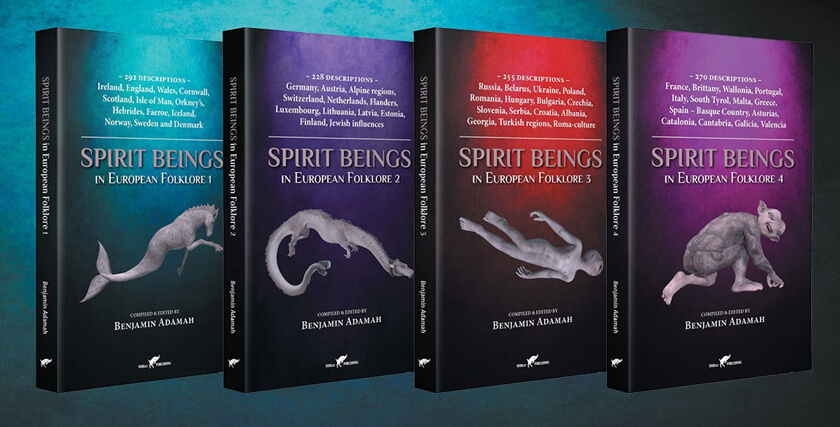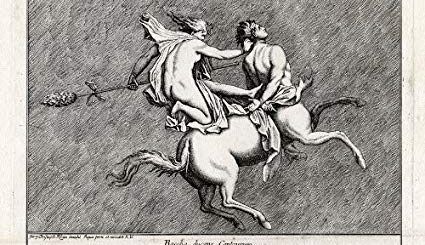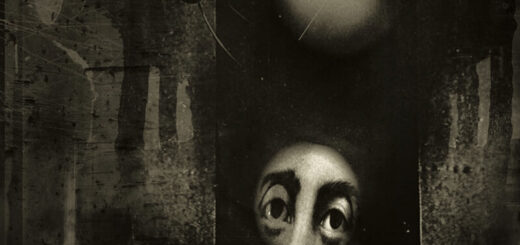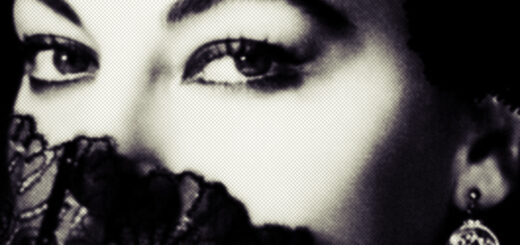Jewish Femmes Fatales for Dummies
Jewish culture is rather cramped, when it comes to human sexuality. In ancient times the Egyptians, Babylonians and, of course, especially the Greeks, were a lot more liberated in this context. It is therefore not surprising that Sodom and Gomorrah, as well as various creatures now depicted as female sex demons, are a Jewish invention. Lilith, the queen of the Succubi, symbol for many feminists and – with Samael – the least understood entity from the (mystical) Jewish pantheon is the best known. In the article below, we review the most notorious femmes fatales.
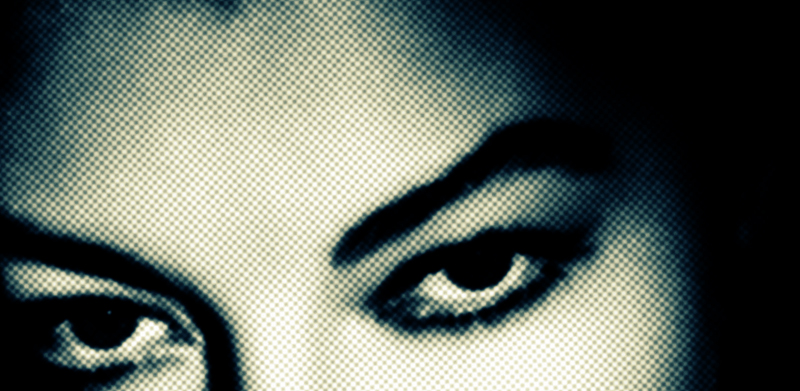
Abyzou, the Godmother
In the myth and folklore of the Near East and Europe, Abyzou (also spelled Abizou, Obizu, Obizuth, Obyzouth, Byzou etc.; Akkadian: 𒁹 𒄷 𒈫 𒁇 Dap.bi.zu) is the name of a female demon. Abyzou was blamed for miscarriages and infant mortality and was said to be motivated by envy (Greek: φθόνος phthonos), as she herself was infertile. In the Coptic Egypt she is identified with Alabasandria, and in Byzantine culture with Gylou (See under Gello), but in various texts surviving from the syncretic magical practice of antiquity and the early medieval era, she is said to have many or virtually innumerable names. Abyzou is pictured on amulets with fish- or serpent-like attributes. Her fullest literary depiction is a 1st to 3rd century grimoire, the Testament of Solomon.
Alfons Ascher Barb (1901-1979) connected Abyzou and similar female demons to the story of the primeval sea, Abzu, in ancient Mesopotamian religion. Barb argued that although the name “Abyzou” appears to be a corrupted form of the Greek ἄβυσσος ábyssos “abyss”, the Greek itself was borrowed from Akkadian Apsu or Sumerian Abzu. This primeval sea (Binah in the Jewish mystical tradition) was originally an androgyne or asexual, later dividing into the male Abzu (fresh water) and the female Tiamat (seawater, appearing as the Tehom in the Book of Genesis).
The female demons, among whom Lilith is the best-known, are often said to have come from the primeval sea. In ancient Greek religion, female sea monsters that combine allure and deadliness may also derive from this tradition, including the Gorgons (who were daughters of the old sea god Phorcys), Sirens, Harpies, and even water Nymphs and Nereids. In the Septuagint, the Greek version of the Hebrew Bible, the word Abyssos is treated as a noun of feminine grammatical gender, even though Greek nouns ending in -os are typically masculine. Abyssos is equivalent in meaning to Abzu as the dark chaotic sea before Creation.
The word also appears in the Christian New Testament, occurring six times in the Book of Revelation, where it is conventionally translated not as “the deep” but as “the bottomless pit” of Hell. Barb argues that in essence the Sumerian Abzu is the “grandmother” of the Christian Devil.
Abyzou (as Obizuth) in The Testament of Solomon
In the late antique Testament of Solomon, Abyzou (as Obizuth) is described as having a “greenish gleaming face with disheveled serpent-like hair”; the rest of her body is covered by darkness. King Solomon encounters a series of demons, binds and tortures each in turn, and inquires into their activities; then he metes out punishment or controls them as he sees fit.
Put to the test, Abyzou says that she does not sleep, but rather wanders the world looking for women about to give birth; given the opportunity, she will strangle newborns. She claims also to be the source of many other afflictions, including deafness, eye trouble, obstructions of the throat, madness, and bodily pain. Abyzou (Obizuth) can also not rest until she steals a child each night. Solomon therefore orders that she be chained by her own hair and hung up in front of the Temple in public view.

Lilith and the Lilin
Legend has it that the children protecting angel Sandalphon forced Lilith to confess all her names and describe all her appearances to render her powerless. From this, 17 names followed (collected by F.C. Conybeare): Abeko, Abito, Amizo, Batna, Eilo, Ita, Izorpo, Kali, Kea, Kokos, Lilith, Odam, Parthasa, Patrota, Podo, Satrina, Talto. In Folklore of the Holy Land, J.E. Hanauer lists 27: Abro, Abyzu, Ailo, Alio, Alu, Amiz, Amizu, Ardad Lili, Avitu, Bituah, Gallu, Gelou, Ik, Ils, Kalee, Kakash, Lamassu, Lilith, Partasah, Petrota, Pods, Paphi, Satrinah, Thiltho, Zahriel, Zefonith.
The demonology of Lilith and Lilin though rooted in the Middle-East lived on through the centuries via the Jewish communities in Europe. Lilin (Hebrew: לילין) is a term for night spirits. In Hebrew-language texts, the term Lilith or Lilit is translated as “night creatures”, “night monster”, “night hag”, or “screech owl”. Lilin are regarded as dangerous creatures in Jewish folklore and according to some stories, the Lilin are the daughters of Lilith (Hebrew: לִילִית), Adam’s first wife, born to Samael, often (very) wrongly identified with Satan.
Samael is the guardian of Araboth, the 7th Hekhaloth or heaven or more precise the Saturn-sphere ruled by the archangel Cassiel, who is not the Angel of Death but carries a lot of sorrow and suffering in the world, which would otherwise afflict humans. Samael is a fiery Shiva-like force and represent the absolute immunity for any sort of obsession er force that wants to obsess, possess or manipulate.
On an esoteric level Lilith, often regarded as the queen or mother of the Lilin in Jewish folklore, was indeed the ideal match for Samael because she represents the “refusal” or right to refuse, ignore, not to bend over for any authority, not even the one of God. In Qabbalistic lore she therefore became the only female creature in God’s creation endowed with the divine gift of the Ha-Shem, i.e. she could directly create just by uttering the words as now they were God’s own words.
Lilith is mentioned in the Babylonian Talmud (Eruvin 100b, Niddah 24b, Shabbat 151b, Baba Bathra 73a), in the Book of Adam and Eve as Adam’s first wife, and in the Zohar Leviticus 19a as “a hot fiery female who first copulated with man”. In the satirical Alphabet of Sirach (c. 700–1000 AD), Lilith appears as Adam’s first wife, who was created at the same time (Rosh Hashanah) and from the same clay as Adam.
The legend of Lilith developed extensively during the Middle Ages, in the tradition of Aggadah, the Zohar, and Jewish mysticism. For example, in the 11th-century writings of Isaac ben Jacob ha-Cohen, Lilith left Adam after she refused to become subservient to him and then would not return to the Garden of Eden after she had coupled with the archangel Samael.
In Jewish folklore Lilith became a single Lilin demon, feared by men traveling and forced to spend the night in the wilderness, abandoned areas or buildings, as a succuba, who wanted to steal their seed, and by women and men for her habit of abducting or harming babies and children. Special amulets and magical formula were used to protect a child from getting stolen or hurt and a prayer was said, invoking the three special anti-Lilith angels: Senoi, Sansenoi and Samangeloph.
So these Mazikim (“harmful spirits”) as the Lilin and Lilith had various roles: the one who preys on males was also known as the Ardat-Lilith, while others imperil women in childbirth and their children.
A predecessor of the latter kind was Lamashtu, against whom incantation formulas have been preserved in Assyrian. Winged female demons who strangle children are known from a Hebrew or Canaanite inscription found at Arslan-Tash in northern Syria and dating from about the seventh or eighth century B.C.E. Lilith was feared as the nocturnal seducer of men, because it was believed that from their wet dream emissions she beared an infinite number of demonic sons.
In this latter role she appears at the head of a vast host of Lilin, who share in her activities. Belief in her erotic powers led some Jewish communities to adopt the custom of sons not accompanying their dead father’s body to the cemetery because they would be shamed by the hovering presence of their demon step-siblings, born of their father’s seduction by Lilith.
Samuel Noah Kramer (1932, published 1938) translated ki-sikil-lil-la-ke as Lilith in “Tablet XII” of the Epic of Gilgamesh dated c.600 BCE. “Tablet XII” is not part of the Epic of Gilgamesh, but is a later Assyrian Akkadian translation of the latter part of the Sumerian Epic of Gilgamesh. Suggested translations for the Tablet XII spirit in the tree include ki-sikil as “sacred place”, lil as “spirit”, and lil-la-ke as “water spirit” but also simply as “owl”, given that the lil is building a home in the trunk of the tree. Lilith in general has been associated with the screech owl.
Akkadian, Sumerian and Babylonian texts mentioning Lilu (masculine), Lilitu (female) and Lili (female). A Lilu or Lilû is a masculine Akkadian word for a spirit, related to Alû, (“demon”). In Akkadian and Sumerian mythology, Alû is a vengeful spirit of the Utukku that goes down to the underworld Kur.
The demon has no mouth, lips or ears. It roams at night and terrifies people while they sleep, and possession by Alû results in unconsciousness and coma; in this manner it resembles creatures such as the Mara, and Incubus/Succubus, which are notorious for causing sleep paralysis. In Akkadian and Sumerian mythology, Alû is associated with other demons like Gallu and Lilu. It is disputed whether, if at all, the Akkadian word Lilu, or cognates, is related to the Hebrew word Lilith in Isaiah 34:14, which is thought to be a night bird (“screech owl”) by some modern scholars.
The Babylonian concept of Lilu may be more strongly related to the later Talmudic concept of Lilith (female) and Lilin (female). In ancient Mesopotamian religion, Lilin were hostile night spirits that attacked men. In Targum Sheni Esther 1:3 King Solomon had lilin dance before him. In the Syriac Apocalypse of Baruch, Lilin come from the desert and they are similar to Shedim. The Shedim are often regarded as the offspring of Lilith, from her union with Adam or other men.
They are not always regarded as demons but nevertheless labeled as evil, simply because they are not God. In Academic circles a connection between the Jewish Lilith to an Akkadian Lilītu is generally accepted. In the Dead Sea Scrolls 4Q510-511, the term first occurs in a list of monsters. Jewish magical inscriptions on bowls and amulets from the 6th century AD onwards identify Lilith as a female demon and provide the first visual depictions of her. In the Testament of Solomon, a Greek work of about the third century based on Judeo-Hellenistic magic, Lilith is called Obizoth, and it is related that one of the mystical names of the angel Raphael inscribed on an amulet prevents her from inflicting injury.

Agrat bat Mahalath
Agrat bat Mahalath or Agrat bat Mahlat (אגרת בת מחלת, “Achrat daughter of Mahlat”), is the “Queen of the Demons” in talmudic legend. In Jewish mythology she is associated with destruction, sorcery and sexual seduction. In the rabbinic literature of Yalḳuṭ Ḥadash it was taught that “a person should not go out alone at night, on Wednesdays and Sabbaths, because “the Dancing Roof-demon” who haunts the air Agrat bat Mahalath and 180,000 destroying angels go forth, and each has permission to wreak destruction independently.”
Ḥanina ben Dosa limited her power to these nights; Abbaye further reduced it (Pes. 112b). Another authority states that the following sentence, whispered repeatedly, is effective against witchcraft: “Agrat bat Mahalath came and caused the death, by arrows, of [two other female demons,] Asya and Belusia” (Pes. 111a; see Ein Ya’akov version). According to Numbers Rabbah 12:3: “Thou shalt not be afraid of the terror by night” (Ps. 91:5), refers to Agrat bat Mahalath and her chariot.
Some scholars hold that Agrat bat Mahalath is identical with Lilith, but Lilith is also seen as her mother or even grandmother. The view that the name “Agrat” is derived from the Persian A(n)gra, meaning “enemy” or demon””, and Mahalath from the root mḥl (מחל; “dance”) meaning therefore “the dancing witch or demon,” has been proposed to explain her name, but is regarded as controversial and not generally accepted. The kabbalists identify Mahalath with the daughter of Ishmael (Gen. 28:9), who gave birth to demons and evil spirits. The midrashic source for this is now lost (cf. Maharsha Pes. 112b).
In Zoharistic Kabbalah, she is a queen of the demons and an angel of sacred prostitution, who mates with Archangel Samael along with Lilith and Naamah, sometimes adding Eisheth Zenubim as a fourth mate.
According to legend, Agrat and Lilith visited King Solomon disguised as prostitutes. The spirits Solomon communicated with via Agrat were all placed inside of a brazen vessel and put inside a cave near the Dead Sea. Later the spirits were discovered by King David. According to the Kabbalah and the School of Rashba, Agrat bat Mahlat mated with King David and gave birth to a cambion son Asmodeus, the King of Demons, who is identified with Hadad the Edomite (a cambion is a creature half human, half demon; often used for a human/succubus or incubus-hybrid).
The spiritual intervention of Hanina ben Dosa and Rabbi Abaye curbed her malevolent powers over humans. In another Kabbalistic treatise – by Nathan Spira (died in 1662) – it is explained that Mahlat was daughter to Ishmael and his wife Mahlat, who was herself daughter of the Egyptian sorcerer Kasdiel. Mahlat was exiled to the desert, where the demon Igrathiel mated with Mahlat and engendered Agrat or Igrat. Mahlat later became Esau’s wife.

Eisheth Zenunim
In Jewish lore Eisheth Zenunim is a soul-eating demon of prostitution and Succubus akin to Lilith. In the Qabbalah, Eisheth Zenunim (Heb. אֵשֶׁת זְנוּנִים, “Woman of Prostitution”) is found in (one of) the Zohar-(versions) as Isheth zennanim or Qodeshah. In Qabbalistic mythology, she is said to eat the souls of the damned or to function as one of the four angels of prostitution, the mates of Samael.
Her fellow Succubi are Lilith, Naamah, and Agrat bat Mahlat, though in the Zohar-version I own myself (the 3 volumes, 1598 pages thick, Wisdom of the Zohar – An Anthology of Texts, London 1994 – by Fischel Lachower, Isaiah Tishby and translations by David Goldstein) The Sitra Achra and demon-sections only mention Lilith, Naamah, and Agrat bat Mahlat.
S.L. MacGregor Mathers does mention her though in his translation of Kabbala Denudata – The Kabbalah Unveiled: “…//Their prince is Samael, SMAL, the angel of poison and of death. his wife is the harlot, or woman of whoredom, AShTh ZNVNIM, Isheth Zenuni; and united they are called the beast, CHIVA, Chioa. Thus the infernal trinity is completed, which is, so to speak, the averse and caricature of the supernal Creative One Samael is considered to be identical with Satan…”
No need to say that under the umbrella of any Abrahemitic religion, and whether or not enwrapped in some mystical jargon in a writing or book, declared “sacred” by people we never met, any woman engaged in sexual activity or even a woman that is simply beautiful, is associated with, or bluntly called, a “whore”, whilst theonic or angelic forces like Satan and Samael are completely misunderstood and wrongly profiled.
This is simply because of the antivitalist and dualist character of these religions and the deeply smoldering sexual frustrations they cultivate, which of course in turn needs a scapegoat as an outlet of distorted and misogyne energies (the woman, witch or “female demon of whoredom” as the origin of evil and the enemy of God).
On the other side of the spectrum, many modern occult groups only make it worse as these beings are often half rebellious, half trendy idolized, by which means they still remain politicized. To understand the true nature of any being it is of course essential it gets depoliticized first. In contrast to Lilith, Naamah and Agrat, Eisheth Zenunim mostly remains a mystery.
I could trace her in a rather Pythonesk and revised Hebrew text in the The William Davidson Talmud : Pesachim 87-A which does not bring us any further either. (The cursive text is the direct translated Hebrew; the bold text gives Eisheth z’nubim w’yaldei z’nubim (“a woman of prostitution and children of prostitution”):

The Holy One, Blessed be He, said: What shall I do to this Elder who does not know how to defend Israel? I will say to him: Go and take a prostitute and bear for yourself children of prostitution. And after that I will say to him: Send her away from before you. If he is able to send her away, I will also send away the Jewish people. This deliberation provides the background of the opening prophecy in Hosea, as it is stated: “The Lord said to Hosea: Go, take for yourself a woman of prostitution and children of prostitution” (Hosea 1:2). And then it is written: “So he went and took Gomer the daughter of Dibelim” (Hosea 1:3), and the Sages interpreted her name homiletically. “Gomer” (“Last one”); Rav said she was so called because everyone would finish having relations with her and satisfy their desires with her. “The daughter of Dibelim”.

Naamah
Naamah (Hebrew נַעֲמָה), also known as Nachem, Nahema, Naamah, Nhama, Naamáh, Nammah or Na’ Ammah (“pleasant”, “charming” or “pleasing” or “pleasing to the gods”) is a legendary demonic creature of Jewish folklore, being depicted as the Demon of Prostitution or a Fallen Angel. She is said to have been a Succubus, and like Lilith had had relations with Adam. The demoness is described in more detail in the Kabbalistic book Zohar as the mother of the Shedim, the friend of Asmodeus and the temptress of the angels. Later Naamah became the ruler of the Qlippoth of Malchuth on the Etz Ha-Chayim (“Tree of Life”), analogous to the diapositive of the Shekhinah (the immanence of God in creation, or female side of God). Naamah was depicted as a woman of fire or as a naked woman with bat wings.
According to tradition, Naamah and Lilith lived on the shore of the Red Sea, where they went after leaving Eden. Naamah is similar in appearance to Lilith, but Lilith being younger, more sensual and beautiful. Demonology shows her as one of the women of Shaitan. She is mentioned in the Zohar as one of the four angels of sacred prostitution (along with Lilith, Agrat bat Mahlat and Eisheth Zenunim), consorts of Samael. She is sometimes mentioned as the mother of Asmodeus and often confused with Naamah, Lamech’s daughter.
According to the Zohar, after Cain kills Abel, Adam separates from Eve for 130 years. During this time, Lilith and Naamah seduce him and bear his demonic children, who became the plagues of mankind. She and Lilith cause epilepsy in children. In another story from the Zohar, Naamah and Lilith are said to have corrupted the angels Ouza and Azazel. The text states she also attracts demons, as she is continuously chased by demon kings Afrira and Qastimon every night, but she leaps away every time and takes multiple forms to entice men.
She makes sport with the sons of man, and conceives from them through their dreams, from the male desire, and she attaches herself to them. She takes the desire, and nothing more, and from that desire she conceives and brings forth all kinds of demons into the world. And those sons she bears from men visit the women of humankind, who then conceive from them and give birth to spirits. And all of them go to the first Lilith and she brings them up.
You may also like to read:
Spirit Beings in European Folklore/
Dybbuk or Dibbuk – the sticky ghost of the Ashkenazi
The incubus or succubus – nightmare or astral sex date?
Bloody Mary, the cocktail and the gruesom phantom in the mirror…
Witches ointment
The real vampire in Russia and Slavonic countries
Historical werewolf cases in Europe
Poltergeist
Why did Witches Want to Ride their Broomsticks?
Hecate – The Calling of the Crossroad Goddess
The Ancient Witch-Cult of The Basques
Walpurgis Night
Stefan Eggeler: Walpurgis Night witches, Kokain (Cocaine) and other illustrations
Witchcraft paintings – Dutch 17th century
Rosaleen Norton, Daughter of Pan
Mysteries of the Ancient Oaks
Black Cat Superstitions
The Mystical Mandrake
Little Secrets of the Poppy
Datura stramonium or jimson weed or zombi-cucumber
Mountain spirits
Wild Man or Woodwose
Sprite
Claude Gillot’s witches’ sabbat drawings

